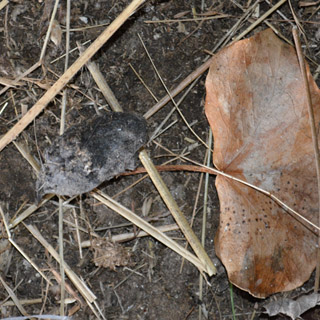 I had often seen a Barn Owl in the late afternoon quartering the roadside verges, hovering and swooping silently and gracefully, as it hunted for voles, dodging the traffic at Pendower Dip. Then one day the inevitable happened. As I travelled by that spot there was a dead Barn Owl in the centre of the road.
I had often seen a Barn Owl in the late afternoon quartering the roadside verges, hovering and swooping silently and gracefully, as it hunted for voles, dodging the traffic at Pendower Dip. Then one day the inevitable happened. As I travelled by that spot there was a dead Barn Owl in the centre of the road.
It is estimated that, nationally, more than 3000 Barn Owls are killed by fast moving traffic every year. That is just one of the dangers they face.
An analysis of all carcasses recovered shows that 80% contain secondary poisoning from rodenticides. There are fewer derelict buildings for nesting. Climate change may be affecting them, as mortality is high in wet, cold weather when hunting conditions are poor. Typically more than half the Barn Owls that are alive in August are dead by the following March. No wonder it is such a rare bird to see.
They are notoriously difficult to survey accurately, but here are some clues which might help.
Late dry winter afternoons are good times to look for them, usually solitary, hunting on silent white dancing wings.
 They fly low along hedge boundaries, marshes, and open fields, particularly where there is permanent rough grassland.
They fly low along hedge boundaries, marshes, and open fields, particularly where there is permanent rough grassland.
They avoid woodland.
They rarely call. However, they occasionally screech in a quite blood-curdling way.
They swallow their prey whole and then regurgitate the indigestible bits as a pellet. If you find a pellet, (usually at a roosting site), it is likely to be a Barn Owl’s if its colour is jet black (fading to matt grey within a month); its shape rounded at both ends; and its length from finger nail to thumb size.
CAN YOU HELP?
Wild Roseland is launching a survey to see how our Roseland Barn Owl population is now coping. Have you information about Barn Owls that you know? Did you use to have Barn Owls? Would you like to have Barn Owls? Do you actually still have Barn Owls?
Please contact David Hall, in confidence, on 01872 501429 or email hallruan@aol.com if you wish to take part or have any information which might help Wild Roseland with the survey.
Upcoming Wild Roseland Walks and Talks – dates for your diary
Note that all events are free but a small donation of £3 would be welcomed.
AGM followed by The Fal and Helford Estuary Special Area of Conservation
A presentation from Sue Scott, Estuary Officer, on “The Fal and Helford Estuary Special Area of Conservation.” All welcome. Admission by donation.
Tuesday, 12th November, 7pm
Gerrans Parish Memorial Hall
Contributors:
Article by David Hall. Edited by Tara Robinson.
Wild Roseland is a group of volunteers who care passionately about looking after the nature and landscape of the Roseland peninsula in south Cornwall. Through a number of initiatives and projects, the aim is to inspire and enhance the conservation of this special place for all.
Image credits:
Barn Owl, Carol Hughes
Owl pellet, Carol Hughes
